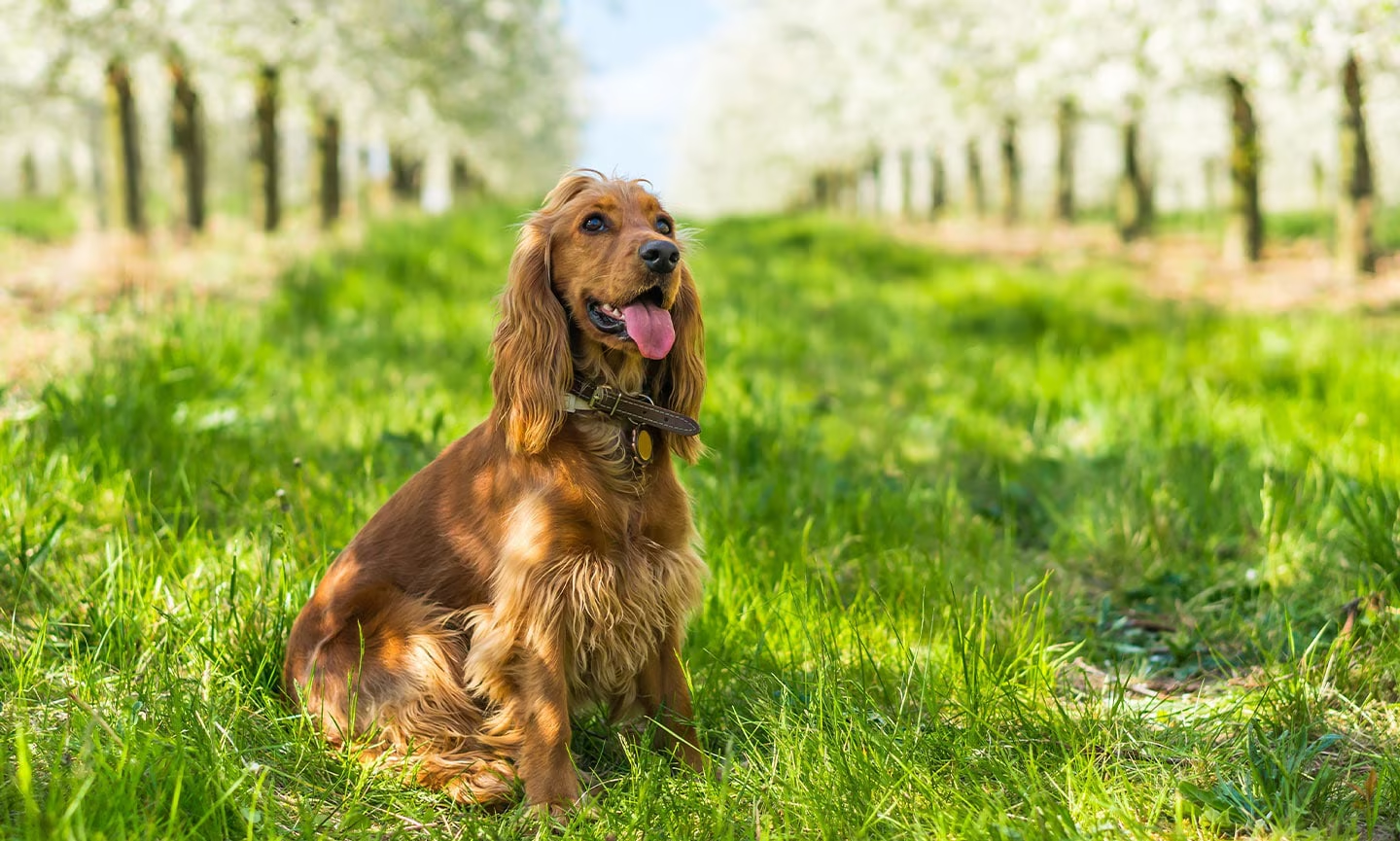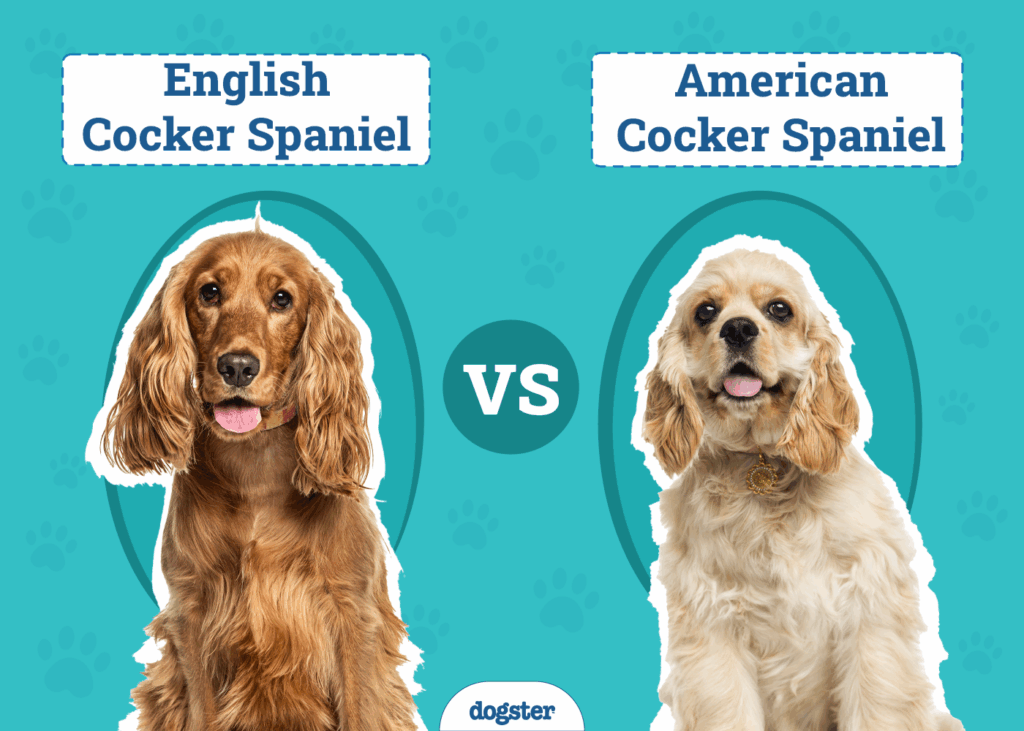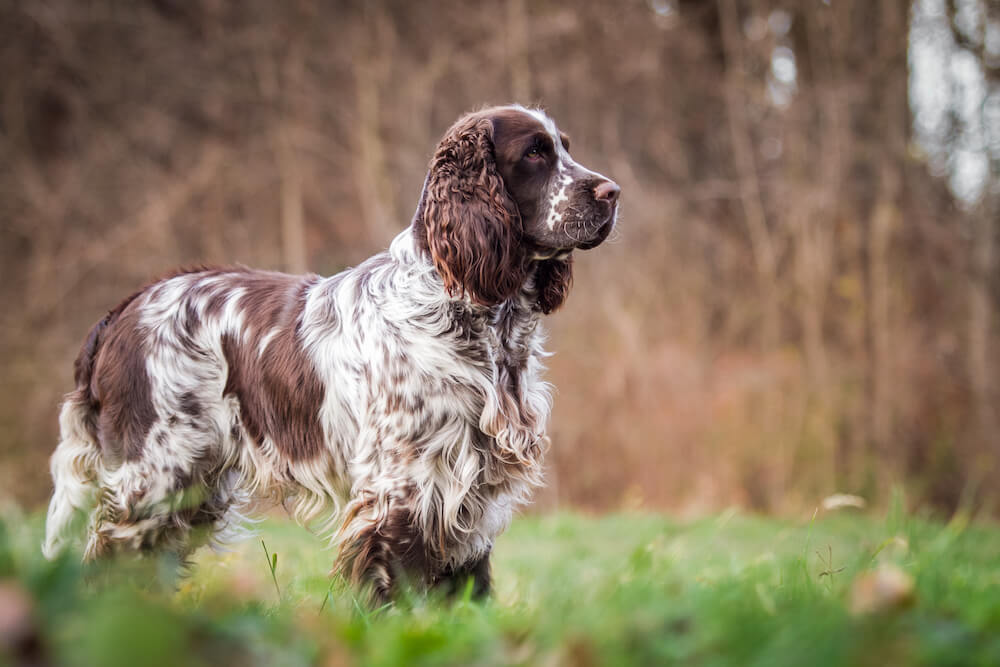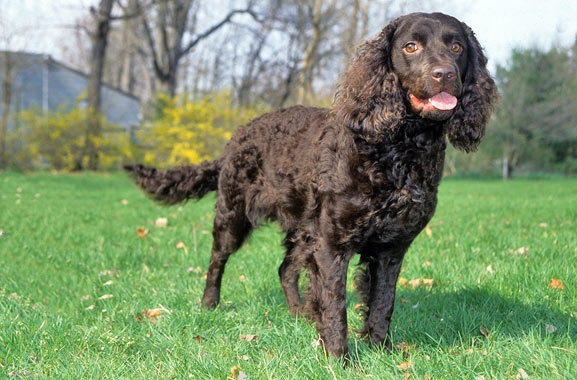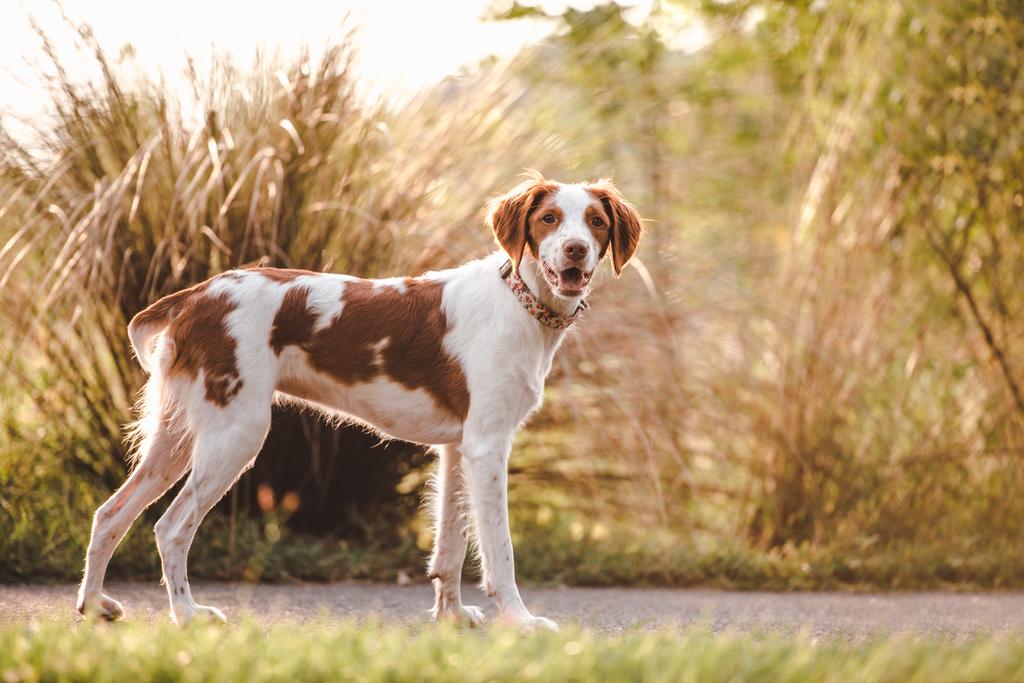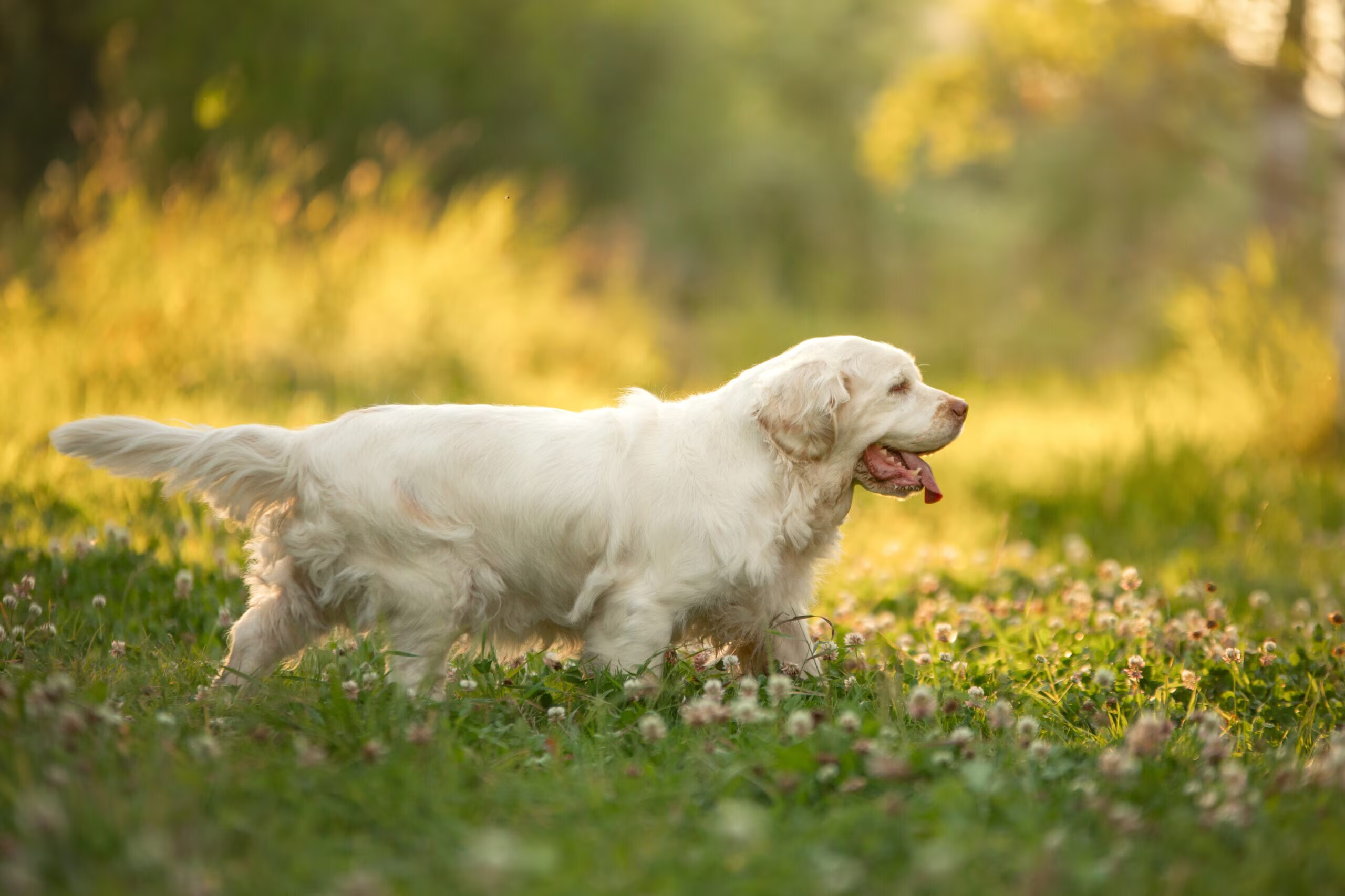The first time I locked eyes with a Cocker Spaniel at my local dog park, I swear those soulful eyes looked straight into my heart. With silky ears flowing in the breeze and that perpetually wagging tail, this dog practically radiated joy. There’s something about Cockers that just makes you smile—maybe it’s their expressive faces, their bouncy personalities, or that signature “merry” temperament the breed is famous for.
Here at pawtrix.wiki, we’re passionate about helping you find your perfect canine match, and Cocker Spaniels deserve serious consideration. Whether you’re actively looking to add one to your family or just curious about these popular pups, there’s a lot to learn about America’s beloved spaniels.
Cocker Spaniels have consistently ranked among America’s most popular breeds for generations—and for good reason. These versatile, medium-sized dogs combine the athletic ability of a sporting breed with the temperament of an ideal family companion. They’re small enough to be manageable but substantial enough to be real dogs. They’re active without being hyperactive, affectionate without being needy, and intelligent without being too independent.
So grab your favorite beverage, get comfy, and let’s dive into everything you need to know about Cocker Spaniels—from their fascinating history as bird hunters to what it’s really like sharing your home with these silky-eared charmers. By the end of this post, you’ll understand why these dogs have captured hearts for generations and whether a Cocker might be the perfect addition to your family!
American vs. English: Understanding the Two Cocker Types
Before we dive deeper, let’s clear up a common source of confusion. When people talk about “Cocker Spaniels,” they might be referring to either American Cocker Spaniels or English Cocker Spaniels—two distinct breeds with shared ancestry but different characteristics. This post focuses primarily on the American Cocker Spaniel (the more common type in the United States), but I’ll highlight key differences throughout.
The American Cocker: Glamour Meets Function
The American Cocker Spaniel is what most Americans picture when they hear “Cocker Spaniel.” These dogs feature:
- A more dome-shaped head with pronounced stop
- Shorter muzzle with a more upturned nose
- More profuse coat with heavier feathering
- Slightly smaller size (typically 13.5-15.5 inches tall)
- More emphasis on coat and appearance in breeding
American Cockers have been bred more extensively for the show ring and companionship, leading to their glamorous appearance and slightly softer temperament.
The English Cocker: The Working Original
English Cocker Spaniels, by contrast, typically have:
- A flatter skull with less pronounced stop
- Longer, more substantial muzzle
- Moderately feathered coat with less grooming requirements
- Slightly larger size (usually 15-17 inches tall)
- More emphasis on working ability in breeding selections
English Cockers have maintained more of their original working character, making them somewhat more field-oriented, though they still make excellent companions.
Both types share many wonderful qualities, and the choice often comes down to personal preference in appearance, slight temperament differences, and whether you’re interested in field activities. For simplicity, when I say “Cocker Spaniel” in this article, I’m referring to the American variety unless specified otherwise.
A Fascinating History: From Bird Dogs to Beloved Pets
Cocker Spaniels have a rich history that spans continents and centuries, evolving from dedicated hunting dogs to the beloved companions we know today.
Ancient Spaniel Origins
The spaniel family of dogs is ancient, with references dating back to the 14th century. These dogs were developed for flushing and retrieving game birds—the term “cocker” actually comes from their specialty in hunting woodcock. Spaniels were classified primarily by their working function rather than appearance, with different types emerging based on the terrain and game they hunted.
All spaniels share certain characteristics that made them excellent hunting companions: keen noses, gentle mouths for retrieving, and unending enthusiasm for the hunt. As firearms became more common in hunting, spaniels adapted to their role of flushing birds into flight for hunters to shoot, then retrieving the fallen game.
The American Transformation
Cockers came to America with English settlers, and by the late 1800s, American breeders were developing their own distinct version of the Cocker Spaniel. The American Kennel Club recognized the Cocker Spaniel in 1878, making it one of the earliest registered breeds in the United States.
Initially, English and American Cockers were considered the same breed, just different varieties. However, as American breeders selected for a smaller size, more domed head, and more luxurious coat, the differences became more pronounced. By 1946, the AKC formally recognized them as separate breeds.
Rise to Pop Culture Fame
The Cocker’s popularity exploded in the 1950s, thanks in large part to Disney’s “Lady and the Tramp,” which featured a refined Cocker Spaniel as the leading lady. This film, combined with the breed’s natural appeal, made Cockers the most popular dog in America for many years.
Unfortunately, this tremendous popularity led to some problematic breeding practices, with puppy mills and backyard breeders producing Cockers with health and temperament issues. Responsible breeders worked diligently to maintain quality, and today’s well-bred Cockers are far removed from these problems.
Through all these changes, Cockers have maintained their cheerful spirit and adaptability, transitioning successfully from working gun dogs to cherished family companions while still retaining many of their original instincts and abilities.
The Cocker Look: Elegance with a Touch of Whimsy
Cocker Spaniels have one of the most distinctive and appealing appearances in the dog world. Their balanced blend of athleticism and elegance, topped with that utterly charming expression, makes them instantly recognizable.
Size and Structure: The Perfect Medium
Cocker Spaniels hit a sweet spot in terms of size:
- Males stand 14.5-15.5 inches at the shoulder, weighing 25-30 pounds
- Females are 13.5-14.5 inches tall, weighing 20-25 pounds
- Overall balance and proportion are more important than exact size
- Body is sturdy and compact with a level topline
- Deep chest provides lung capacity for endurance
This size makes them substantial enough to be real sporting dogs but small enough to adapt well to various living situations. They’re not toy dogs, but they’re compact enough to live comfortably in apartments (with adequate exercise) and fit nicely in your lap for cuddle sessions.
That Irresistible Face
The Cocker Spaniel face is where their personality truly shines:
- Expressive, almond-shaped eyes in dark brown (ideally)
- Round, dome-shaped head with pronounced stop
- Long, low-set ears with abundant feathering
- Sweet, soft expression that’s nearly impossible to resist
- Square muzzle with strong jaw but gentle appearance
Their eyes are particularly captivating—liquid pools of emotion that seem to communicate directly with you. Combined with those iconic flowing ears that frame the face like a living portrait, it’s easy to see why these dogs have been artistic subjects for centuries.
The Glamorous Coat
The Cocker’s coat is perhaps their most defining physical feature:
- Medium-length on the body, with silky, flat or slightly wavy texture
- Abundant feathering on ears, chest, belly, and legs
- Shorter, finer hair on the face and front of legs
- Comes in a remarkable variety of colors and patterns
Speaking of colors, Cockers have one of the widest color ranges of any breed. They come in:
- Solid colors: Black, liver (brown), red, cream, and occasionally others
- Parti-colors: Two or more solid colors with one being white
- Roans: Fine mixture of colored and white hairs creating a mottled appearance
- Tan points: Specific tan markings on a solid colored dog
This rainbow of possibilities means there’s a Cocker color to suit every taste. The AKC divides them into three varieties for show purposes: Black/Black and Tan, ASCOB (Any Solid Color Other than Black), and Parti-Colors.
Movement and Presence
When a Cocker moves, you can see their sporting heritage in action. Their gait is free-flowing and ground-covering, with good reach in front and strong drive from behind. They carry themselves with a distinctive eagerness that embodies their “merry” nature—head held relatively high, tail wagging enthusiastically (usually level with their back or slightly higher).
This combination of physical traits creates a dog that’s beautiful without being extreme, athletic without being intimidating, and distinctive without looking artificial. Simply put, Cockers are living works of art that just happen to also be wonderful companions.
The Cocker Personality: “Merry” is Just the Beginning
The breed standard for Cocker Spaniels specifically uses the word “merry” to describe their temperament—and it’s absolutely perfect. These dogs approach life with a joyful enthusiasm that’s completely contagious. But there’s much more to the Cocker personality than just happiness.
The Loving Family Dog
Cockers form deep, devoted bonds with their families:
- Genuinely affectionate and demonstrative with their love
- Thrive on human companionship and inclusion
- Generally good with children when properly socialized
- Usually get along well with other pets
- Adapt well to family routines and activities
These are dogs that truly want to be part of everything you do. They’re happiest when included in family activities, whether that’s watching TV on the couch, going for car rides, or joining outdoor adventures. They form close bonds with all family members rather than becoming a “one-person dog.”
Intelligence and Trainability
Cockers combine intelligence with a desire to please:
- Quick learners who respond well to positive methods
- Relatively easy to housetrain with consistency
- Excel at obedience, agility, and other dog sports
- Can be sensitive to harsh correction or criticism
- Thrive with reward-based training approaches
Their intelligence is practical rather than cunning—they’re problem-solvers who want to figure out what you want from them. They’re typically eager to learn new commands and tricks, especially when the training process is fun and rewarding. That said, they can occasionally display a touch of stubbornness, particularly if they catch an interesting scent (remember those hunting instincts!).
Energy Level and Exercise Needs
Cockers have a moderate, adaptable energy level:
- Enjoy daily walks and play sessions
- Have good endurance for a small/medium dog
- Typically have an “off switch” indoors when exercised
- Maintain playfulness throughout life
- Adapt to their owner’s activity level to some extent
While definitely not couch potatoes, Cockers aren’t hyperactive either. They need regular exercise—ideally 30-60 minutes daily—but don’t typically demand the intense physical outlets that some sporting breeds require. A nice walk, some fetch in the yard, and interactive playtime inside will satisfy most Cockers’ exercise needs.
The Sensitive Soul
Perhaps the most important thing to understand about Cocker temperament is their sensitivity:
- Very tuned in to human emotions and household moods
- Can be affected by tension or conflict in the home
- Respond poorly to harsh training methods or criticism
- May be sound-sensitive (especially to loud arguments)
- Thrive in positive, consistent environments
This sensitivity is both their strength and their vulnerability. It makes them incredibly attuned to their owners and responsive to gentle guidance, but it also means they can be easily upset by harshness or inconsistency. Cocker experts often emphasize that these dogs should be raised with positive reinforcement and gentle consistency—never with punishment-based training.
When properly raised and socialized, this sensitivity creates a dog with an almost uncanny ability to respond to your moods and needs—many Cocker owners describe their dogs as almost empathic in their ability to offer comfort when needed.
Living With a Cocker: The Practical Side
Beyond their charming looks and personalities, what’s it actually like to share your home with a Cocker Spaniel? Let’s get into the day-to-day realities of Cocker ownership.
Grooming Requirements: The Beautiful Burden
Let’s be honest—that gorgeous coat comes with maintenance requirements:
- Regular brushing (at least 3-4 times weekly) to prevent mats
- Professional grooming every 4-8 weeks for most pet Cockers
- Special attention to ears, which can trap moisture and debris
- Regular checking and cleaning of eyes to prevent staining
- Routine nail trims, dental care, and other basic maintenance
The Cocker coat can be managed at home with the right tools and knowledge, but many owners opt for professional grooming to maintain the classic Cocker look. Different trims are available depending on your preferences—from the full show coat to more practical “puppy cuts” that reduce maintenance.
Another consideration is that Cockers do shed, though not as heavily as some breeds. Regular brushing helps control the amount of hair around your home. Some people mistakenly believe Cockers are hypoallergenic because of their wavy coat—they are not, and can trigger allergies in sensitive individuals.
Health Considerations: Knowledge is Power
Cocker Spaniels are generally healthy dogs with a lifespan of 12-15 years, but like all breeds, they have some health issues to be aware of:
- Eye conditions (cataracts, glaucoma, progressive retinal atrophy)
- Ear infections (due to those beautiful drop ears)
- Allergies and skin issues in some lines
- Hip dysplasia and patellar luxation
- Certain cardiac issues
- Auto-immune disorders in some bloodlines
Working with a reputable breeder who conducts appropriate health testing is the best way to reduce these risks. Regular veterinary care, maintaining appropriate weight, and being vigilant about ear cleaning can prevent many common Cocker health problems.
It’s worth mentioning that there can be significant differences in health between well-bred Cockers and those from less responsible sources. The breed’s popularity has sometimes led to poor breeding practices, making it especially important to seek out breeders who prioritize health and temperament.
Training Approach: Gentle Consistency
Successfully training a Cocker Spaniel requires understanding their learning style:
- Positive reinforcement yields the best results
- Consistency and clear expectations are essential
- Short, engaging training sessions prevent boredom
- Physical corrections or harsh methods can damage confidence
- Early socialization creates a well-adjusted adult dog
Most Cockers want to please and learn quickly when motivated properly. Food rewards, praise, and play are all effective motivators. Their sensitive nature means they’re easily confused or discouraged by inconsistent rules or harsh corrections.
Early and thorough socialization is particularly important. Exposing your Cocker puppy to various people, animals, environments, and situations during their formative months helps prevent timidity or fearfulness in adulthood.
Space and Exercise Requirements
One of the Cocker’s advantages is their adaptability to different living situations:
- Can thrive in apartments with adequate exercise
- Appreciate access to a yard but don’t require large outdoor spaces
- Do well in both urban and suburban environments
- Need 30-60 minutes of daily activity, ideally including off-leash play
- Benefit from varied activities (walks, fetch, training, play)
While Cockers enjoy having space to play, they’re primarily indoor dogs who want to be where their people are. They adapt well to various home environments provided they receive sufficient exercise and attention. Their moderate size means they don’t need enormous living quarters, though they do appreciate having room to move around comfortably.
Cockers and Families: Making the Perfect Match
Cocker Spaniels have a well-deserved reputation as excellent family dogs, but like any breed, they fit better with some family situations than others.
Cockers and Children
Generally speaking, Cockers and kids are a good match:
- Patient and gentle with children they know well
- Playful without being too rough or overwhelming
- Size is ideal—substantial enough to handle some interaction but not so large as to knock children over easily
- Adaptable to the noise and activity level of family life
- Protective without aggression
That said, proper supervision is always important. Cockers can be sensitive to rough handling, and young children should be taught appropriate ways to interact with the dog. For this reason, they often do best with school-age children rather than toddlers, though there are plenty of Cockers who live happily with younger kids in supervised settings.
Multi-Pet Households
Cockers typically integrate well into homes with other pets:
- Generally get along well with other dogs
- Can learn to live peacefully with cats, especially when raised together
- May have some prey drive toward small animals like hamsters or birds
- Usually good about respecting established pet hierarchies
Their social nature means most Cockers enjoy having animal companions, though as with any multi-pet situation, proper introductions and supervision are important. Their hunting background means they may chase smaller animals, so households with small pets should exercise appropriate caution and training.
Ideal Family Situations
Cockers tend to thrive in these family environments:
- Families with older children who understand dog etiquette
- Households where someone is home regularly
- Active families who will include the dog in activities
- Homes with consistent routines and expectations
- Families who appreciate a dog that wants to be involved in everything
They may be less ideal for:
- Households where the dog would be alone for extended periods
- Families seeking a very independent dog
- Homes with very young children without close supervision
- People unwilling or unable to maintain their grooming needs
The happiest Cockers are those who are treated as full family members and included in daily activities and routines. Their desire for human companionship means they don’t do well when excluded or isolated for long periods.
Finding Your Cocker: Making a Responsible Choice
If you’ve decided a Cocker Spaniel might be the perfect addition to your family, there are several paths to consider for finding your new companion.
Reputable Breeders: Starting Right
Working with a responsible breeder is often the most reliable way to get a Cocker puppy with sound health and temperament:
- Look for breeders who perform health testing (eyes, hips, cardiac, etc.)
- Ask about socialization practices for puppies
- Expect to be thoroughly interviewed about your home and expectations
- Visit the breeder’s facilities if possible to see how dogs are kept
- Be prepared to wait for the right puppy—good breeders don’t always have puppies available immediately
Reputable breeders typically belong to national or regional Cocker Spaniel clubs and participate in some form of competition with their dogs (conformation shows, obedience, field trials, etc.). The American Spaniel Club is an excellent resource for finding breeders committed to the breed’s wellbeing.
Expect to pay $1,200-$2,500 for a well-bred Cocker puppy from health-tested parents, depending on your location and the breeder’s program. This higher initial investment typically pays dividends in better health, temperament, and support throughout the dog’s life.
Rescue and Adoption: Second Chances
Rescue can be a wonderful way to find a Cocker Spaniel:
- Many Cockers end up in rescue through no fault of their own
- Adult dogs often come with known personalities and some training
- Adoption fees are typically much lower than purchasing a puppy
- Many rescues provide initial veterinary care and assessment
- The satisfaction of providing a deserving dog with a loving home
Cocker-specific rescue organizations exist across the country, and general shelters and rescue groups occasionally have Cockers or Cocker mixes available. The American Spaniel Club also maintains rescue contacts who can help match you with a dog in need.
Be aware that some rescue Cockers may need extra patience, training, or grooming attention initially, especially if they came from neglectful situations. However, these dogs often blossom remarkably in loving homes and make incredibly devoted companions.
Avoiding Puppy Mills and Irresponsible Sources
Unfortunately, Cocker Spaniels’ popularity has made them targets for puppy mills and unethical breeders. These sources typically:
- Offer puppies with little or no health testing of parents
- Produce large numbers of puppies with minimal individual attention
- Keep breeding dogs in poor conditions
- Sell through pet stores or online with shipping
- Emphasize convenience and immediate availability
Puppies from these sources are at higher risk for health and temperament problems that can cause heartbreak and significant expense down the road. The slightly higher initial cost and wait time for a responsibly bred Cocker is a worthwhile investment in a healthier, happier companion.
Conclusion: Is a Cocker Spaniel Right for You?
After our journey through the world of Cocker Spaniels, you might be wondering if this breed is the right match for your lifestyle and home. Let’s wrap up with some final thoughts.
Cocker Spaniels offer an appealing combination of moderate size, affectionate temperament, and adaptable nature. Their expressive eyes and flowing coats make them visually distinctive, while their “merry” personalities create devoted companions who genuinely want to be part of family life. For active families seeking a versatile, loving dog of manageable size, the Cocker has much to recommend it.
However, they’re not the perfect breed for everyone. Their grooming needs require commitment, their sensitivity demands gentle handling, and their desire for companionship means they’re not ideal for homes where they would spend long periods alone. They need regular exercise and mental stimulation to stay happy and well-adjusted.
The ideal Cocker Spaniel owner is someone who:
- Wants an affectionate, involved canine family member
- Appreciates a dog with both beauty and personality
- Can commit to regular grooming and maintenance
- Enjoys moderate daily exercise with their dog
- Understands the importance of positive, consistent training
- Values a dog that’s responsive and tuned in to their emotions
If you’re considering a Cocker Spaniel, take time to meet adult dogs, talk to experienced owners, and honestly assess whether your lifestyle and expectations match what these dogs need. Remember that choosing a dog is a commitment for the entirety of that dog’s life—ideally 12-15 years for a healthy Cocker.
Whether you ultimately welcome a Cocker into your home or decide another breed is a better fit, taking the time for thoughtful consideration is the most responsible approach to dog ownership. Every dog deserves a home where they’re understood, appreciated, and properly cared for throughout their life.
For those who do choose a Cocker Spaniel, the rewards are substantial—a beautiful, loving companion who approaches life with enthusiasm and joy, who shares your sorrows and celebrations with equal devotion, and whose expressive eyes remind you daily of the special bond between humans and dogs. In the right home, a Cocker Spaniel isn’t just a pet—they’re a treasured family member who enriches life in countless ways.
Here at pawtrix.wiki, we believe in matching the right dog with the right home. If the Cocker Spaniel’s blend of affection, intelligence, and adaptability speaks to you, you might have found your perfect canine companion—a living legacy of the “merry” sporting dog that has captured hearts for generations.
